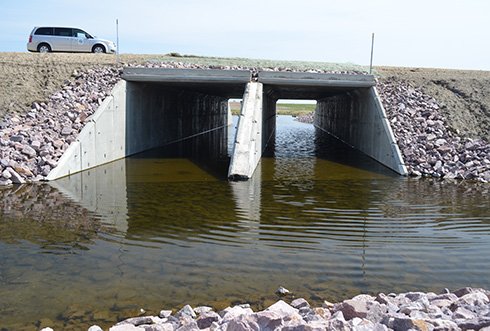Featured Project: Evaluating Impacts of Long, Dark Culverts on Topeka Shiner Passage

Research at the St. Anthony Falls Laboratory (SAFL) is continually in flux - with over fifteen affiliated faculty and SAFL's talented applied engineering group, new projects and experiments are always coming in the door, utilizing our unique facilities, expertise, and/or experimental spaces. Learn more below about a project that investigates potential behavioral barriers to fish passage in culverts.
Project Summary:
Culverts enable water to pass under roads, trails, and other infrastructure. For rivers and streams, culverts maintain flow in the channel, but they can act as barriers for fish and other aquatic organisms trying to move upstream and downstream. Higher flow velocities through culverts or insufficient water depth are common barriers, but research looking at potential behavioral behaviors (something that would invoke an avoidance response from fish that slows or stops their movement through a culvert) is relatively limitied. Low light conditions in longer culverts is one such condition that may inhibit fish passage, but this issue has not been extensively studied.
In Minnesota, several older culverts are currently being replaced with longer culverts that help improve safety for traffic and farm vehicles. However, installing such culverts that would have lower light conditions could inhibit passage of fish, and in this case, Minnesota's only federally protected fish species, the Topkea Shiner. The Minnesota Department of Transportation was tasked to help investigate the potential impacts the new, longer culverts would have on the Topeka Shiner, determining if light mitigation strategies are necessary
Project Outcomes:
Sponsor:
Minnesota Department of Transportation
Principal Investigator(s):
Jessica Kozarek, Research Associate, St. Anthony Falls Laboratory
Jay Hatch, Dean’s Office CEHD, James Ford Bell Museum of Natural History, University of Minnesota
Project Details:
This project commenced in Summer 2016 and was completed in Fall 2019
Project Report:
